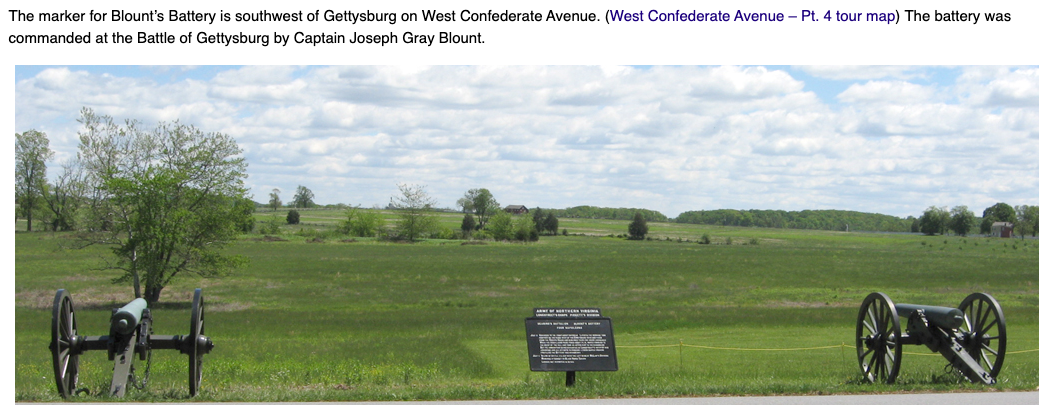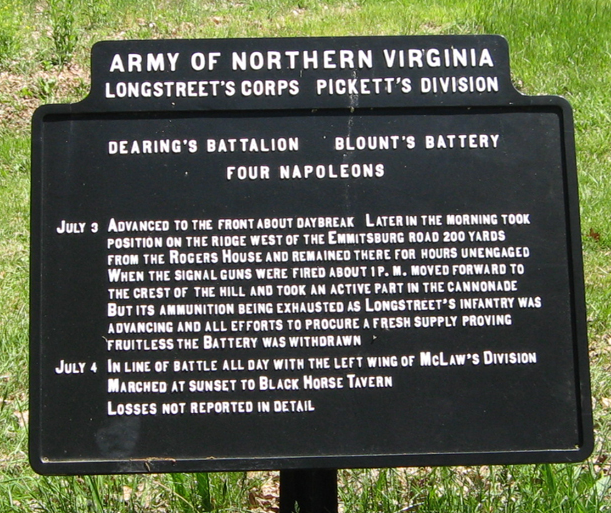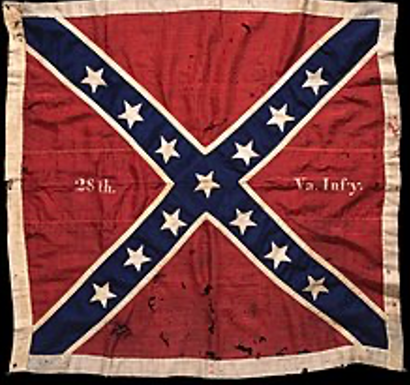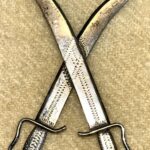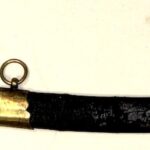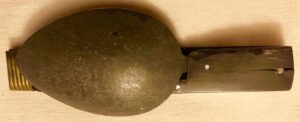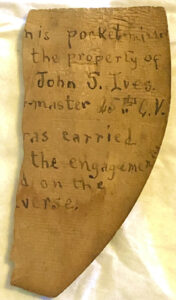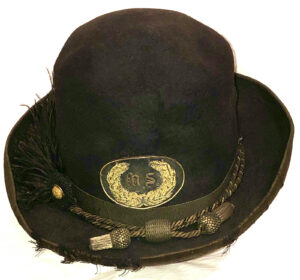1/6 Plate Relievo Ambrotype of a Confederate Soldier in Co. C 28th Virginia Infantry – “The Old Dominion Rifles”
$2,750
1/6 Plate Relievo Ambrotype of a Confederate Soldier in Co. C 28th Virginia Infantry – “The Old Dominion Rifles” – The young Confederate depicted in this image was a member of the “Old Dominion Rifles” – Co. C 28th Virginia Infantry. On June 1, 1861, ten companies entered in the service of the Confederate Army as the 28th Virginia Infantry; as a member of this regiment, Co. C, formed from men from Bedford County, Virginia, were under the command of Captain Thomas M. Bowyer. In October, 1862, the company transferred to the 38th Battalion Virginia Artillery, the Lynchburg Artillery Battery. Although the identity of the individual depicted in this image is unknown, there are two brothers from Co. C pictured in the H.E. Howard Virginia Regimental series history of the 28th Va. Infantry, by Frank E. Fields, Jr. These two brothers, William Henry Lafayette Wells and Jesse Ward Wells, are wearing the identical uniform and shako as the sitter in this ambrotype; it also appears that the two images of the Wells brothers and the image posted here, were seemingly taken by the same photographer, at the same studio – the poses and furnishings are virtually the same.
This ambrotype remains in overall very good condition; all brass uniform elements were hand gilded, in the period. As the two Wells brothers, this individual’s shako appears to be a U.S. Model 1851, infantry cap, as it retains the dark blue wool band around the exterior base. The image remains in an original, period, complete leatherette case. We have included a brief overview of the Wells brothers service records here, as both being members of Co. C of the 28th Va. Inf., transferred into the 38th Battalion Virginia Light Artillery. We presume that the sitter in this image followed suit.
Jesse Ward Wells
| Residence was not listed; an 18 year-old Farmer.
Enlisted on 5/13/1861 at Liberty, VA as a Private. On 5/13/1861 he mustered into “C” Co. VA 28th Infantry He was transferred out on 8/15/1861 (Estimated day of transfer) He was listed as: * On rolls 8/15/1861 (place not stated) He also had service in: VA 38th Battn Light Artillery
William Henry Lafayette Wells
|
28th Regiment, Virginia Infantry
OVERVIEW:
28th Infantry Regiment completed its organization at Lynchburg, Virginia, in June, 1861. Its members were raised in the counties of Botetourt, Craig, Bedford, Campbell, and Roanoke. After fighting at First Manassas the unit was assigned to General Pickett’s, Garnett’s, and Hunton’s Brigade, Army of Northern Virginia. It was active in the campaigns of the army from Williamsburg to Gettysburg except when it served with Longstreet at Suffolk. The 28th moved to North Carolina, then was on detached duty at Richmond. It fought at Cold Harbor, endured the battles and hardships of the Petersburg trenches, and was engaged in various conflicts around Appomattox. The regiment totalled 600 men in April, 1862, and reported 40 casualties at Williamsburg at 47 at Seven Pines. It lost 12 killed and 52 wounded at Second Manassas, had 8 killed and 54 wounded during the Maryland Campaign, and, of the 333 engaged at Gettysburg, half were disabled. Many were captured at Sayler’s Creek, and 3 officers and 51 men surrendered on April 9, 1865. The field officers were Colonels Robert C. Allen, Robert T. Preston, and William Watts; Lieutenant Colonels Samuel B. Paul and William L. Wingfield; and Majors Michael P. Spesard and Nathaniel C. Wilson.
28th Virginia Infantry Regiment
| 28th Virginia Infantry Regiment | |
| Active | June 1861 – April 1865 |
| Disbanded | April 1865 |
| Country | Confederacy |
| Allegiance | Confederate States of America |
| Branch | Confederate States Army |
| Type | Infantry |
| Engagements | First Battle of Manassas Peninsula Campaign Seven Days’ Battles Battle of Williamsburg Battle of Seven Pines Battle of Gaines Mill Battle of Glendale Second Battle of Bull Run Battle of South Mountain Battle of Antietam Battle of Fredericksburg Siege of Suffolk Battle of Gettysburg Battle of Cold Harbor Siege of Petersburg Battle of Five Forks Battle of Sailor’s Creek Appomattox Campaign |
The 28th Virginia Infantry Regiment was an infantry regiment raised in Virginia for service in the Confederate States Army during the American Civil War. It fought mostly with the Army of Northern Virginia. The 28th Virginia completed its organization at Lynchburg, Virginia, in June, 1861.[1] Its members were raised in the counties of Botetourt, Craig, Bedford, Campbell, and Roanoke.
After fighting at First Manassas, the unit was assigned to General Pickett‘s, Garnett‘s, and Hunton‘s Brigade, Army of Northern Virginia.[2] It was active in the campaigns of the army from Williamsburg to Gettysburg except when it served with Longstreet at Suffolk. The 28th moved to North Carolina, then was on detached duty at Richmond. It fought at Cold Harbor, endured the battles and hardships of the Petersburg trenches, and was engaged in various conflicts around Appomattox.
The regiment totaled 600 men in April, 1862, and reported 40 casualties at Williamsburg, and 47 at Seven Pines. It lost 12 killed and 52 wounded at Second Manassas,[3] had 8 killed and 54 wounded during the Maryland Campaign, and, of the 333 engaged at Gettysburg, half were disabled. Also at Gettysburg, the regiment’s battle flag was captured by the 1st Minnesota Infantry Regiment. Many were captured at Sayler’s Creek, but 3 officers and 51 men survived to surrender on April 9, 1865.
Battle flag
Among the losses was its regimental flag which was taken by the 1st Minnesota Regiment at Gettysburg and still resides in the Minnesota Historical Society.[4][5] Private Marshall Sherman of the First Minnesota Infantry captured the regiment’s battle flag at Gettysburg. He was subsequently awarded the Congressional Medal of Honor.
Further information: List of American Civil War Medal of Honor recipients: Q–S
Notable veterans
The field officers were Colonels Robert C. Allen, Robert T. Preston, and William Watts; Lieutenant Colonels Samuel B. Paul and William L. Wingfield; and Majors Michael P. Spesard and Nathaniel C. Wilson. Company officers: Henry S. Trout.
38th Battalion, Virginia Light Artillery (Read’s)
Virginia: 38th Light Artillery Battalion, Company D
(aka Virginia Lynchburg Artillery Battery)
OVERVIEW:
38th Artillery Battalion contained four companies and was organized in June, 1863. The unit did not serve as one command but did participate in many campaigns of the Army of Northern Virginia. Its companies were the Fauquier Light Artillery, the Richmond Fayette Light Artillery, the Hampden Light Artillery, and Latham’s-Blount’s Battery. See history of each unit for details. The field officers were Majors Joseph G. Blount, James Dearing, John P.W. Read, and Robert M. Stribling.
Associated units:
Hampden Light Artillery was organized at Richmond, Virginia, in May, 1861, with men from Richmond. After serving in Jackson’s Valley Campaign, it was assigned to R.S. Andrews’, J.Dearing’s, H.P. Jones’, J.P.W. Read’s (38th Battalion), and R.M. Stribling’s Battalion of Artillery, Army of Northern Virginia. The unit was active from the Seven Days’ Battles to Gettysburg, moved to North Carolina, and later was involved in the Plymouth expedition. Returning to Virginia, it fought on the Bermuda Hundred line and at Cold Harbor, participated in the defense of Petersburg, and ended the war at Appomattox. The battery was commanded by Captains William H. Caskie, Lawrence S. Marye, and John E. Sullivan.
Latham’s-Blount’s Battery completed its organization at Lynchburg, Virginia, in April, 1861. After taking an active part in the Battle of First Manassas, the unit was assigned to J. Dearing’s, H.P. Jones’, J.P.W. Read’s (38th Battalion), and R.M. Stribling’s Battalion of Artillery. It fought with the Army of Northern Virginia from Williamsburg to Gettysburg, moved to North Carolina, and later was involved in the Plymouth expedition. Returning to Virginia, it was active on the Bermuda Hundred line and saw action at Cold Harbor and in front of Petersburg. It sustained 10 casualties of the 96 engaged at Gettysburg, and many were captured at Rice’s Station on April 6, 1865. It surrendered at Appomattox with only 3 men. Captains Joseph G. Blount, James Dearing, James W. Dickerson, and J.Grey Latham were in command.
Fauquier Light Artillery was organized as infantry in June, 1861, and assigned to the 49th Regiment Virginia Infantry as Company G (1st). In September or October it transferred to the artillery. Attached to the Army of Northern Virginia the unit served in J. Dearing’s, J.P.W. Read’s (38th Battalion), and R.M. Stribling’s Battalion of Artillery. It participated in various conflicts from Williamsburg to Gettysburg, moved to North Carolina, and later saw action in the Plymouth expedition. Returning to Virginia, it was on the Bermuda Hundred line, fought at Cold Harbor, then took part in the defense of Petersburg and the Appomattox Campaign. This battery reported 5 men disabled of the 134 engaged at Gettysburg, sustained 9 casualties at Kelly’s Ford, and surrendered with only 3 men. Its commanders were Captains William C. Marshall and Robert M. Stribling.
Lynchburg (Virginia) Artillery
Confederate Regiments & Batteries * Virginia
| 1861 | |
| April | Created in Lynchburg under the command of Captain Henry Grey Latham, a medical doctor. |
| July | Assigned to Cocke’s Brigade, Army of the Potomac. Equipped with four 6-pounder smoothbore howitzers. |
| July 21 |
Battle of Manassas (Bull Run)The battery lost one man wounded. |
| July-October | Assigned to Cocke’s Brigade, 1st Corps, Army of the Potomac. |
| October-November | Assigned to Cocke’s Brigade, Longstreet’s Division, 1st Corps, Army of the Potomac. |
| November-January | Assigned to Cocke’s Brigade, Longstreet’s Division, 1st Corps, Potomac District, Department of Northern Virginia. |
| 1862 | |
| January-April | Assigned to Cocke’s Brigade, Longstreet’s Division, Potomac District, Department of Northern Virginia. |
| April 3 | The battery was reorganized. Captain Latham, a doctor, left to become an army surgeon. James Dearing became captain. Dearing was in the West Point Class of 1862, (which graduated early as the class of June 1861). He resigned before graduation with the secession of Virginia) |
| April – May |
Siege of YorktownAssigned to Pickett’s Brigade, Longstreet’s Division, Potomac District, Army of Northern Virginia. |
| May 5 |
Battle of Williamsburg |
| May 31-June 1 |
Battle of Seven Pines |
| June-July | Assigned to Artillery Battalion, Longstreet’s Division, Army of Northern Virginia. |
| June 25-July 1 |
Seven Days Battles |
| June 30 |
Frayser’s Farm |
| July-August | Assigned to Artillery Battalion, Longstreet’s Division, Army of Northern Virginia. |
| October-February | Assigned to Artillery Battalion, Pickett’s Division, 1st Corps, Army of Northern Virginia. |
| December 13 |
Battle of Fredericksburg |
| 1863 | |
| February-April | Assigned to Artillery Battalion, Pickett’s Division, Department of Virginia and North Carolina. |
| April-May |
Suffolk CampaignAssigned to Artillery Battalion, Pickett’s Division, Department of Southern Virginia |
| May-July | Assigned to Artillery Battalion, Pickett’s Division, 1st Corps, Army of Northern Virginia |
| June | Redesignated as the 38th Virginia Light Artillery Battalion as Company D. The battery and the battalion would continue to operate independently and be known by their older designations. Captain Dearing was promoted to major and Captain Joseph Blount took command of the battery.
Assigned to Artillery Battalion, Pickett’s Division, 1st Corps, Army of Northern Virginia. |
| July 1-3 |
Battle of GettysburgThe battery was commanded by Captain Joseph Blount. The battery brought 96 men to the field and was equipped with four 12-pounder Napoleons. It lost 10 casualties. From the War Department marker for the battery at Gettysburg: July 3. Advanced to the front about daybreak. Later in the morning took position on the ridge west of the Emmitsburg Road 200 yards from the Roger’s House and remained there for hours unengaged. When the signal guns were fired about 1 P. M. moved forward to the crest of the hill and took an active part in the cannonade. But its ammunition being exhausted as Longstreet’s infantry was advancing and all efforts to procure a fresh supply proving fruitless the Battery was withdrawn. July 4. In line of battle all day with the left wing of McLaws’ Division. Marched at sunset to Black Horse Tavern. Losses not reported in detail. |
| July | Assigned to Dearing’s 38th Virginia Light Artillery Battalion, 1st Corps Artillery, Army of Northern Virginia. |
| September | Moved to North Carolina and assigned to Dearing’s 38th Virginia Light Artillery Battalion, Pickett’s Division, Department of North Carolina. |
| December | Assigned to Dearing’s 38th Virginia Light Artillery Battalion, Department of North Carolina. |
| 1864 | |
| April 17-20 |
Plymouth Expedition |
| May | Assigned to Dearing’s 38th Virginia Light Artillery Battalion, Department of North Carolina and Southern Virginia. |
| May 17-June 14 |
Bermuda HundredAssigned to Dearing’s 38th Virginia Light Artillery Battalion, Hoke’s Division, Department of North Carolina and Southern Virginia. |
| June 1-3 |
Battle of Cold Harbor |
| June-October |
Siege of PetersburgAssigned to Read’s 38th Virginia Light Artillery Battalion, Department of North Carolina and Southern Virginia. |
| October | Assigned to Read’s-Stribling’s 38th Virginia Light Artillery Battalion, 4th Corps, Army of Northern Virginia. |
| 1865 | |
| April 2-9 |
Appomattox Campaign |
| April 6 |
Rice’s StationA number of the battery’s men were captured. |
| April 9 |
Appomattox Court HouseOnly three men surrendered with Lee’s army. |











